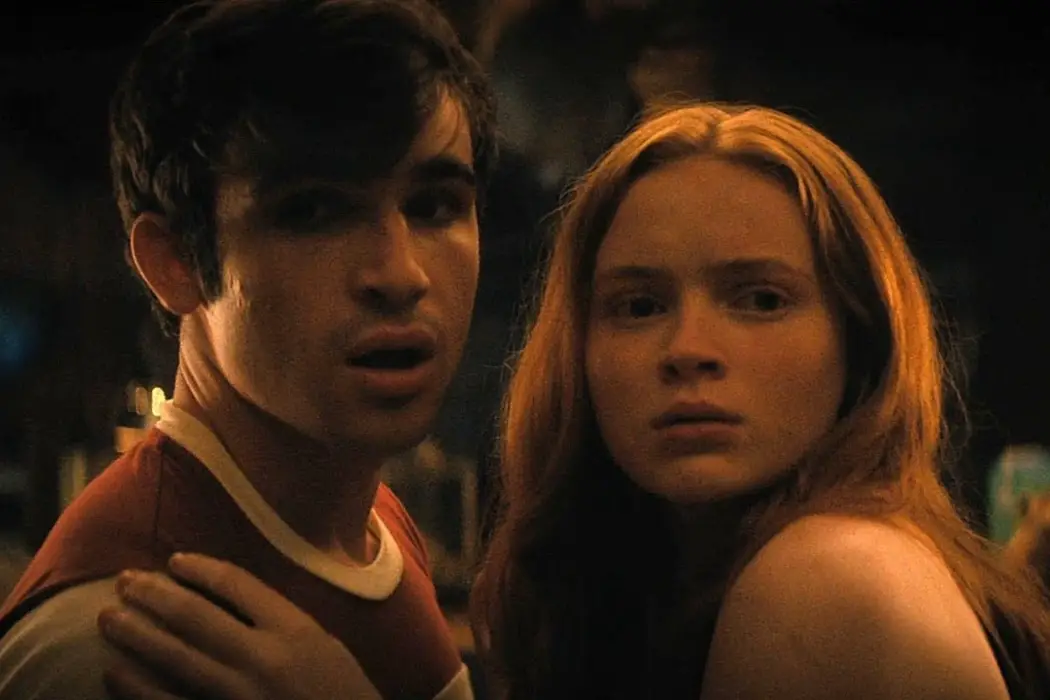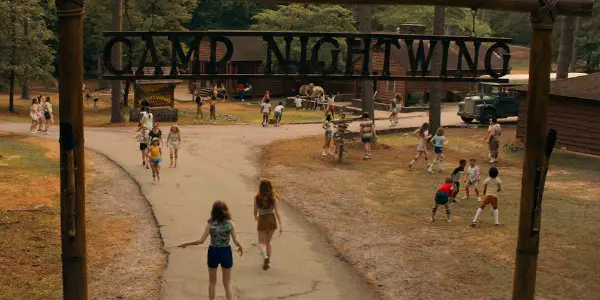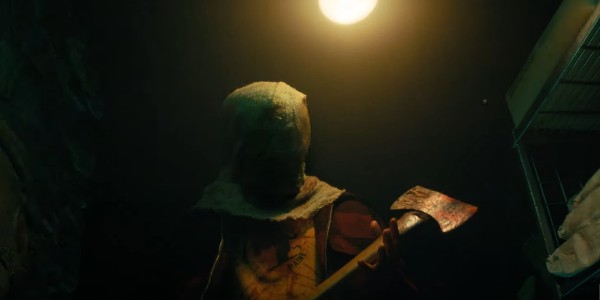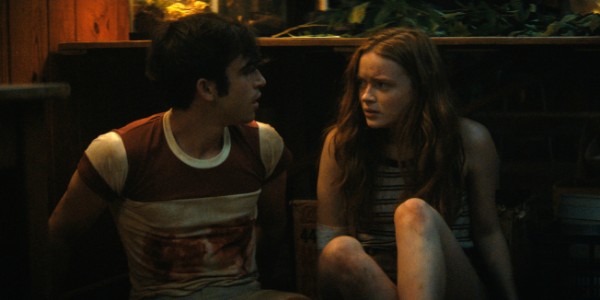FEAR STREET: PART TWO – 1978: Camp Slasher With Strong Characters And Performances, But Not Enough Gore

Amanda Mazzillo is a writer with an MFA in Dramatic…
Fear Street: Part Two – 1978, directed by Leigh Janiak and written by Leigh Janiak and Zak Olkewicz, is the next installment in the Fear Street trilogy based on the book series by R.L. Stine. Netflix releases the trilogy weekly, creating a memorable horror event of the summer. This installment looks to the late 70s and the summer camp slasher for its inspiration. Early 80s films such as Friday the 13th, The Burning, and Sleepaway Camp come to mind in this new slasher. The film begins with the characters from 1994 being told a story to help their own ‘present-day’ curse-ending struggles.
1970s Ambiance, Horror Tropes, Connecting the Series
Fear Street 1978 works to establish the decade of its story, creating nostalgia through needle drops. Sometimes these bursts of popular 70s songs work well, creating dissonance with the horror action, but some of these moments, especially early into the film are cut way too short.
One song starts, and before we really get to embrace its feeling, another vastly different 70s track is already being thrown at us. The best use of music comes when more of the song is used, and it works along with the scene, creating an atmosphere that is both nostalgic for the music as well as the horror. Cat Stevens‘ The First Cut is the Deepest – released in 1967 – is one of the better uses of music. Having the song be quieter in the background works well to build the horror of the scene.

The visual style of the camp, especially when we are first introduced to the location and all of its characters, perfectly captures the decade and the look of horror films from the camp slasher subgenre. This introduction establishes multiple characters, the connections to the overarching lore, and the nostalgic 1970s style.
Ziggy Berman (Sadie Sink) is bullied by her fellow campers, especially Sheila (Chiara Aurelia) and Kurt (Michael Provost), who embodies the preppy overly-chipper slightly ostentatious counselor. A counselor stands up for her: Nick Goode (Ted Sutherland) – who goes on to become the Sheriff played by Ashley Zuckerman in the 1994 era of the story. Sheila brings to mind the mean-spirited camper Judy in Sleepaway Camp. Aurelia plays the rude camper who goes to far well and establishes fear for Ziggy even before the killer arrives.
Fear Street 1978 establishes connections to the horror of the early 80s with its quiet killer wielding a big weapon. A few moments live up to the gore that comes with axe slashing, but Fear Street 1978 feels less inventive and interesting in its kills than it could be. Too many kill scenes are similar to what has already come or they are completely off-screen. For an R-rated horror, this film cuts away right when the gore would start far too many times. But its final slasher chase feels vivid and contains some appreciated gory moments.
Fear Street 1978 succeeds in its moments of smoothly connecting this film to the previous installment. It fills in gaps and offers more insight into the curse of Sarah Fier (Elizabeth Scopel) and how that aspect of the story will become the center of the adventure in the third installment.

The film utilizes a frame narrative, which works to connect the series, but part of me wanted this installment to begin firmly in the 1970s, exploring that camp aesthetic right away in its opening scene. I appreciate seeing the characters we know and love from Fear Street 1994, easing us into this new crop of teenager slasher victims and survivors, but it takes away from the ambiance of being immersed within a slasher confined to a specific decade.
Relationship and Character Development
Fear Street 1978 separates the action of the film into two groups: Ziggy and Nick in the camp and Ziggy’s sister Cindy Berman (Emily Rudd) with Alice (Ryan Simpkins), Tommy (McCabe Slye), and Arnie (Sam Brooks) exploring a map of the camp left behind by the nurse Mary Lane (Jordana Spiro).
This separation allows characters to be around people they might not have chosen themselves and allows new relationships to blossom. The dynamic between Ziggy and Nick is especially interesting knowing where each character ends up in 1994 and gives the dynamic in the present day a slightly more hopeful gleam. Sadie Sink and Ted Sutherland work wonderfully together and capture an awkward and hopeful relationship.

Whenever the movie would shift back to Ziggy and Nick, be it pranking the other campers or trying to save them, the film jumpstarted and felt more reminiscent of its 70s and early 80s influences. Ziggy’s big fight against the film’s central killer is one of the most memorable and Sadie Sink plays the part wonderfully. She perfectly embodies her character who stands up for herself and wants to save her fellow campers, even though they never viewed her as a friend. She brings to life the horror genre of the past and works wonderfully as a strong, smart, and resourceful scream queen.
The change in Ziggy and Cindy’s characters allows their sibling relation to become stronger, leading to emotionally resonant moments played beautifully by Sadie Sink and Emily Rudd.
After Cindy and Alice spend so much time together, they start to see each other differently and see how people can be strong in their own unique ways. Ryan Simpkins gives a strong performance in both the frightening horror-centric moments and more emotional scenes exploring the character’s history and unique personality. Cindy and Alice both grow and view each other in new ways throughout their horrific journey.
Conclusion
Fear Street: Part Two – 1978 is a charming and at times, heartfelt horror film, but its moments of horror are often hidden from the viewer, creating a film that does not fully embrace its potential as a modern summer camp slasher classic, though the characters and performances – especially Sadie Sink, Ryan Simpkins, and Emily Rudd – are nuanced and powerful.
Does releasing a trilogy weekly interest you? If so, do you think the Fear Street trilogy is succeeding? Let us know in the comments below!
Fear Street: Part Two – 1978 released July 9th on Netflix. The third installment Fear Street: Part Three – 1666 will release July 16th.
Watch Fear Street: Part Two – 1978
Does content like this matter to you?
Become a Member and support film journalism. Unlock access to all of Film Inquiry`s great articles. Join a community of like-minded readers who are passionate about cinema - get access to our private members Network, give back to independent filmmakers, and more.
Amanda Mazzillo is a writer with an MFA in Dramatic Writing from SCAD and a BA in Writing & Linguistics and Film Studies minor from Georgia Southern University. She enjoys writing comedy and exploring all forms of media. Her Twitter name is a bad pun: @mazzillofirefox













